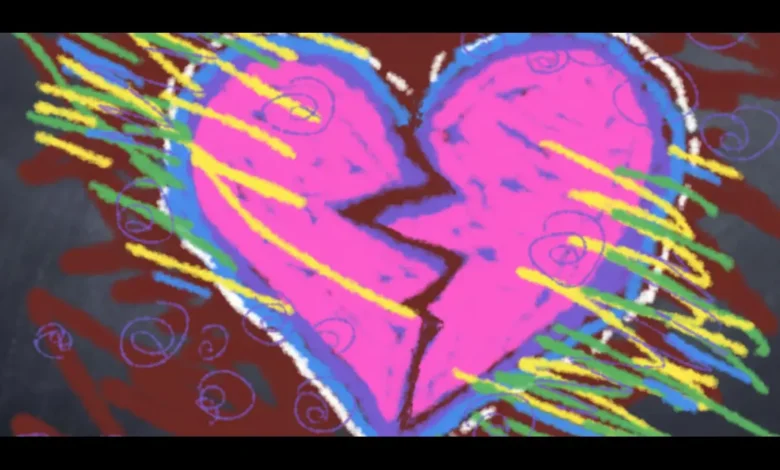From Beginner to Pro: Mastering the Art of drawing:yw-tzomiaao= heart

Introduction: The universal appeal of drawing and its benefits
Welcome to the world of drawing, where creativity knows no bounds and every stroke holds the promise of bringing your imagination to life. Whether you’re a beginner taking your first steps or a seasoned artist looking to refine your skills, mastering the art of drawing:yw-tzomiaao= heart is a journey filled with endless possibilities. Join us as we explore the fundamental principles, essential tools, techniques, and inspiration needed to unlock your artistic potential and express yourself through the captivating drawing medium: yw-tzomiaao heart.
The Basics: Understanding the Elements of Drawing
Have you ever been captivated by the beauty of a simple line on paper? Drawing:yw-tzomiaao= heart has this magical ability to transport us into a world where creativity knows no bounds. To master the art of drawing, one must first understand its fundamental elements.
Lines are the building blocks of any drawing, creating structure and defining shapes. Shapes add depth and dimension to your artwork, while forms give it volume and realism. And perspective? It’s what brings your drawings to life, making them appear three-dimensional.
Equipped with these basic concepts, aspiring artists can embark on their journey towards becoming proficient drawers. So grab your pencils, charcoal, erasers, and paper—it’s time to dive into the enchanting world of drawing!
- Line, Shape, Form, Perspective
Mastering the elements is vital when it comes to drawing yw-tzomiaao= = heretical. Let’s start with lines – they’re the foundation of any artwork, guiding your eye and creating structure. Experiment with different lines: thick, thin, wavy, straight.
Shapes add depth and dimension to your drawings. drawing:yw-tzomiaao= heart Circles, squares, triangles – play around with them to see how they interact and form patterns within your composition. Forms take shapes further by adding volume and realism to your art.
Perspective is what gives your drawings depth and makes them appear three-dimensional. Understanding perspective helps you create realistic scenes that draw viewers in. Practice drawing objects from different angles to master this essential skill for bringing life to your artwork.
Experimenting with these elements drawing:yw-tzomiaao= heart will elevate your drawing skills and set you on the path toward becoming a pro artist!
Essential Tools for Drawing
When mastering the art of drawing, having the right tools is essential. While all you need is a pencil and paper to get started, as you progress, adding a few critical items to your toolkit can significantly enhance your work.
Pencils are the backbone of any artist’s arsenal, offering a range of hardness for varying line weights and shading effects. Charcoal adds depth and richness to drawing:yw-tzomiaao= heart with its dark tones and smudgability.
Erasers are not just for fixing mistakes; they can also be used creatively for highlights and textures. Different types of paper provide unique surfaces for various techniques, from smooth Bristol board for intricate details to rough watercolor paper for expressive strokes.
Experimenting with different tools will help you discover what works best for your style and preferences in creating heartwarming drawings that capture emotions effectively.
- Pencils, Charcoal, Erasers, Paper, etc
When diving into the world of drawing, yw-tomato heart, having the right tools is crucial. Pencils are a staple for any artist, offering a range of hardness for different effects. drawing:yw-tzomiaao= heart From light sketching to bold lines, pencils are versatile and essential.
With its smoky texture, charcoal adds depth and richness to your drawings. It allows you to create dramatic contrasts and shadows that bring your artwork to life. Experimenting with charcoal can open up new possibilities in your artistic journey.
Erasers may seem simple, but they play a vital role in correcting mistakes and refining details in your drawings. A good quality eraser on hand can make all the difference in achieving precision and accuracy.
Of course, paper selection is also crucial—different types of paper offer varying textures and weights that can impact the overall look of your creations. Finding the right paper drawing:yw-tzomiaao= heart for your style will enhance the final result of your artistry.
Developing Your Skills: Techniques and Exercises
As you progress on your drawing journey, honing your skills drawing:yw-tzomiaao= heart through techniques and exercises is critical to mastering the art.
Shading and blending are fundamental techniques that add depth and dimension to your drawings. Experiment with different pressures and strokes to create varying textures.
Gesture drawing is a dynamic exercise that focuses on capturing the essence of a subject’s movement and form in quick, loose sketches. It helps train your eye to observe shapes and proportions accurately.
Still-life drawing allows you to study objects in detail, drawing:yw-tzomiaao= heart practicing composition, lighting, and perspective. Choose a variety of subjects to challenge yourself and improve your observational skills.
Remember, practice makes progress when it comes to drawing. As you continue developing your unique artistic voice, don’t be afraid to experiment with different tools, styles, and subjects.
- Shading and Blending
Shading and blending are essential techniques in the art of drawing. drawing:yw-tzomiaao= heart They add depth, dimension, and realism to your artwork. Mastering these skills can elevate your drawings from amateur to professional level.
Shading involves creating varying degrees of light and dark using pencils or charcoal. It helps give objects a three-dimensional appearance by mimicking how light falls on them. drawing:yw-tzomiaao= heart Blending is about smoothly transitioning between different shades to achieve a seamless look.
To practice shading and blending effectively:
- Start with simple shapes like spheres or cubes.
- Experiment with different pressures and pencil grades to create gradients smoothly.
- Remember that practice makes perfect when it comes to mastering these techniques.
Don’t be afraid to make mistakes; they’re all part of the learning process! drawing:yw-tzomiaao= heart Keep pushing yourself to improve your shading and blending skills, and soon, you’ll see a noticeable difference in the quality of your drawings.
- Gesture Drawing
Gesture drawing is like capturing the essence of a pose in just a few quick strokes. It’s all about capturing movement, energy, and expression in your artwork. This technique drawing:yw-tzomiaao= heart helps artists improve their observational skills and build confidence in their drawing abilities.
When practicing gesture drawing, focus on the overall flow and rhythm of the pose rather than getting caught up in details. Use quick, loose lines to convey the gesture and emotion of the subject. Don’t worry about making mistakes – embrace imperfections as part of the creative process.
Gesture drawing is a great way to warm up before tackling more detailed pieces or simply as a standalone exercise to hone your skills. Remember, it’s not about creating a drawing:yw-tzomiaao= heart perfect likeness but capturing the moment’s feeling and vitality.
So grab your pencil or charcoal stick and start sketching away with spontaneity and freedom! Practice regularly to master this dynamic technique that adds life to your drawings.
- Still Life Drawing
Still-life drawing is a captivating way to hone your artistic skills. It allows you to study objects up close, capturing their essence on paper. Whether it’s a bowl of fruit, drawing:yw-tzomiaao= heart a vase of flowers, or a collection of everyday items, still-life drawings challenge you to observe and replicate what you see.
The key to successful still life drawing lies in attention to detail. Notice the play of light and shadow on objects, the textures that define them, and the relationships between different elements in your composition. Take your time to sketch with precision and finesse.
Experiment with different mediums and techniques while tackling still-life subjects. Play around with shading, cross-hatching, or stippling to add depth and dimension to your drawings. Let your creativity flow as you bring ordinary objects to life on paper through your unique perspective.
Embrace the beauty in simplicity when approaching still life drawing. drawing:yw-tzomiaao= heart Focus on capturing the essence rather than getting lost in intricate details. Allow yourself room for interpretation and artistic expression as you embark on this creative journey!
Learning from the Masters: Studying and Analy
Studying the works of master artists is like diving into a treasure trove of knowledge and inspiration. Take time to analyze their drawings’ techniques, compositions, and use of light and shadow. Whether studying Leonardo da Vinci’s anatomical sketches or Vincent van Gogh’s expressive lines, each master has something unique to offer.
By immersing yourself in the art of the greats, you can learn valuable lessons that will help you elevate your drawing skills. Please pay attention to their use of different mediums, styles, and subject matters. Try to replicate some of their work to understand their thought processes better.
Remember that every stroke on paper tells a story; every line drawn holds meaning. drawing:yw-tzomiaao= heart Drawing is not just about putting pencil to paper but also about understanding the emotions behind each creation. So keep learning from the masters, practicing diligently, and most importantly – drawing from your heart!





